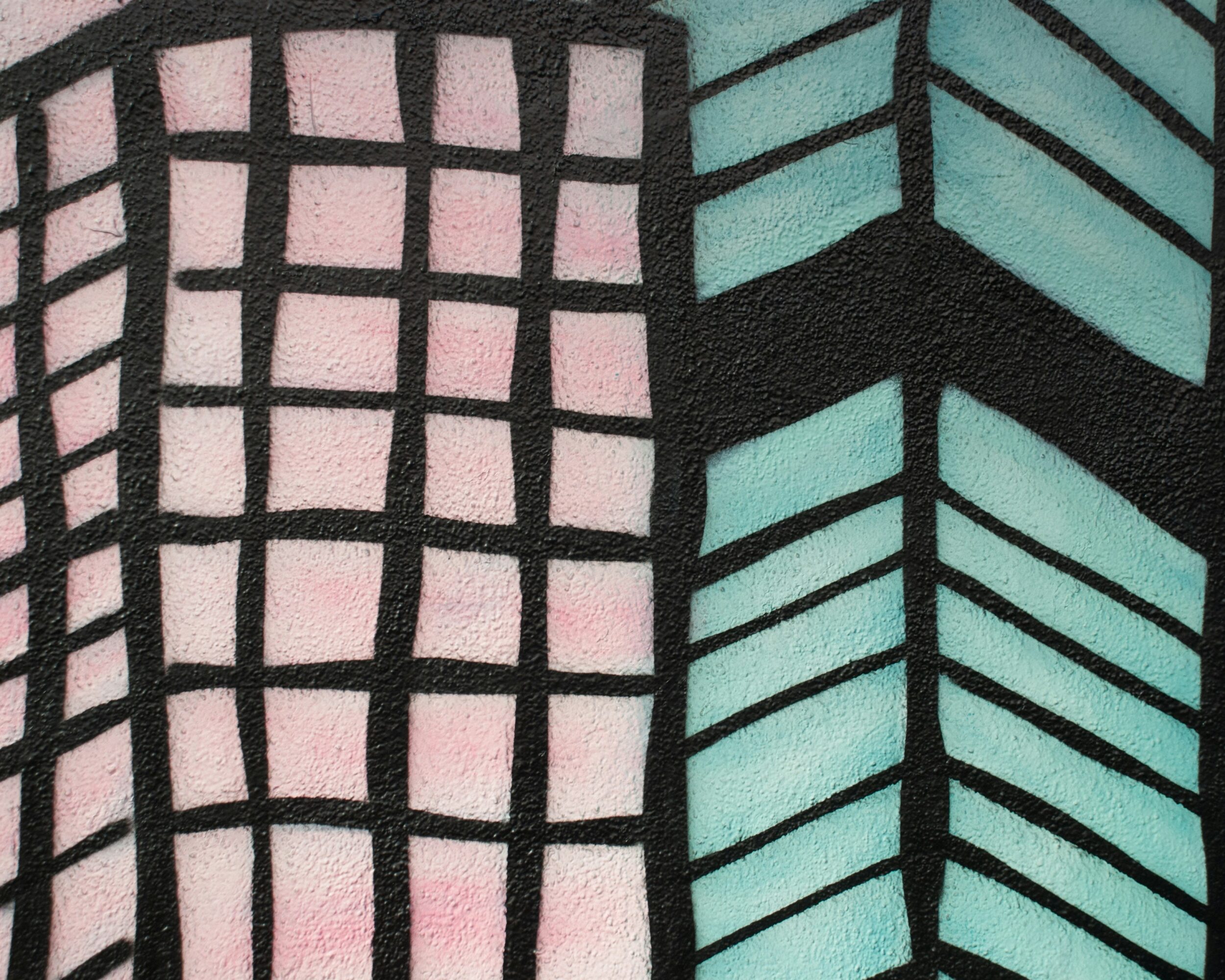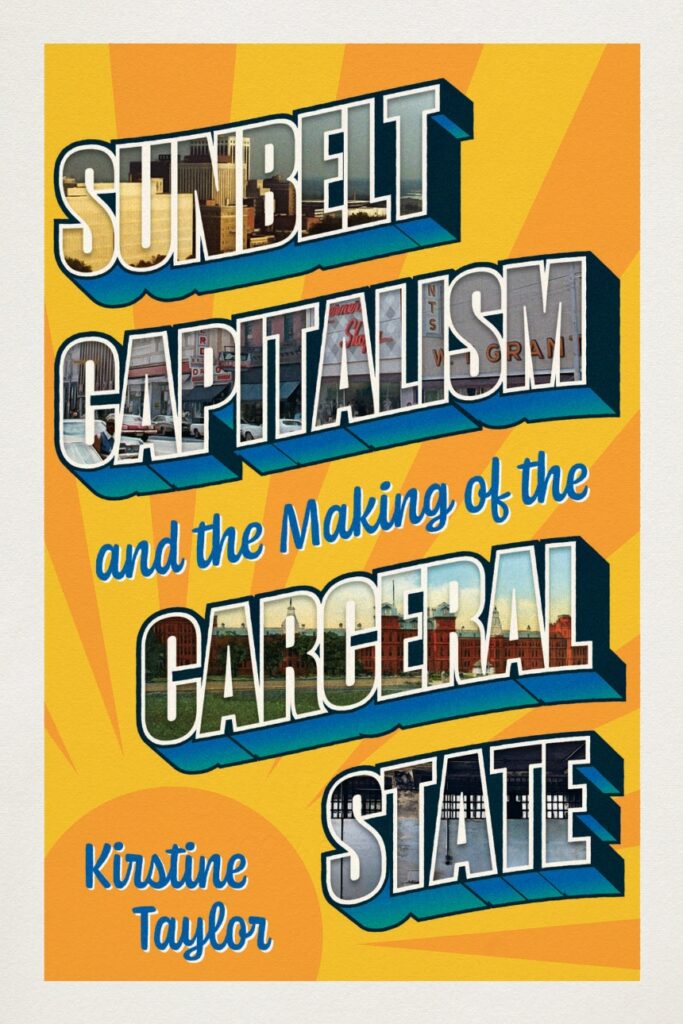On the evening of June 15, 1975, 150 people incarcerated in the North Carolina Correctional Center for Women (NCCCW), a prison situated at the southeastern edge of Raleigh’s downtown core, refused to return to their cells at the eight o’clock lock-in time. Gathering in the prison yard, they instead engaged in a sit-in protest focused on three demands: the closure of the prison’s main industry, the laundry; proper medical care; and an end to their treatment as “slaves of the state.”
The women chronicled this protest, and their daily fight against the facility’s brutalization, in a self-produced zine from 1976, titled Break de Chains of Legalized U.$ Slavery. At NCCCW, work in the laundry was compulsory, unpaid, hot, heavy, and routinely dangerous. The laundry’s workers handled an immense daily load of linens and clothing from state-run facilities across North Carolina, including Central Prison, the main men’s penitentiary located a few miles from NCCCW’s wire-fenced perimeter; several chain-gang road camps in surrounding counties; local hospitals; and the nearby North Carolina Sanatorium for the Treatment of Tuberculosis. During working hours, temperatures inside the laundry could reach 120 degrees. In sweltering heat, the women handled, without gloves or other protective gear, incoming soiled linens laden with bodily fluids, chemicals, and the possibility of infection. One worker reported that she was forced to handle “infested clothing” with “no protection whatsoever.” She worked in the laundry a mere nine months, she wrote, “before the germs consumed my body.”
It was in resistance to these conditions, resulting as they did in the carceral consumption of bodies, that the women’s evening protest evolved into a five-day-long work stoppage. Laundry work ground to a halt. In the words of Marjorie Marsh, one of the organizers, such a strike was nothing short of a demand for incarcerated women’s lives: “In short we stood so that we could and may continue to live—we stood for life itself.”
On the fifth day of the laundry workers’ strike, prison administrators forced its end in a shower of state violence and administrative reprisals: 125 armed guards attacked the striking women with batons and tear gas, leaving seventeen injured. Prison administrators transferred Marsh and at least thirty others identified as “ringleaders” to other prison facilities in the state. There, the women reported enduring prolonged solitary confinement, threats and violence from guards, and containment in “cold, dismal, rat-infested” cells in which they were served “murky” water and “food too cold to consume.”
Even as the strike crumbled under the weight of state violence, in the weeks that followed it became clear that the protesters had nevertheless secured an ostensible double victory: the laundry remained shuttered, and Governor James Holshouser, emphasizing the need for facility “modernization,” approved the purchase of new equipment for the prison’s infirmary. But the feeling of victory was short-lived. No longer “slaves of the state,” the women incarcerated in NCCCW were left to survive prison life in the South’s emerging carceral state. The elimination of laundry work and the purchase of modern equipment did not alleviate the harm of imprisonment, which included forms of gendered state violence such as forced sterilization and sexual assault. Indeed, Marsh lambasted the governor’s modernization efforts as mere window dressing: “He speaks of the removal of antiquated equipment, replaced by the shiny new equipment!! (that is still shining!) The new equipment is irrelevant to our demands. We did not ask for a softer bed, a nightstand, a locker, etc. WE ASKED FOR LIFE!!”
Over twenty years later, in 1997, medical services inside NCCCW remained so dire that incarcerated people filed a federal lawsuit, alleging that systematic, life-threatening deficiencies in health care had resulted in deaths, miscarriages, and long-term health problems for women in the facility. Intolerable conditions—including crowding prisoners into non-air-conditioned dormitories that render worsening summer heat waves a safety concern—continue to this day.
Moreover, carceral expansion accompanied carceral modernization. In 1975, the year of the strike, NCCCW was one of six state prisons operational in North Carolina. Within a decade, the state built, by my count, an additional eight juvenile and adult prison facilities, constituting an initial post–World War II prison-building boom that was surpassed only by the explosive pace of prison construction in the 1990s. Today, North Carolina operates over 50 prisons incarcerating over 32,000 people, approximately 6 percent of whom labor in road crews or in prison industries.
The decline of chain gangs and the rise of prisons—two hallmarks of carceral reform not just in North Carolina but across the South—might have signaled the collapse of Jim Crow carceral power, but they also heralded the building of an increasingly bureaucratic and metastasizing modern carceral state that nevertheless deals daily in harm, illness, and the repression of residents’ efforts to organize for rights, freedom, and bodily health. As Marsh’s experience makes clear, this would be a transformation that ultimately reorganized rather than reduced the violence of southern criminal punishment in the second half of the twentieth century.
Why does carceral power, as a particular form of state authority, change how and when it does? What forces combine to prompt transformations in the state’s capacity to police, contain, and punish? And what new kinds of racialized state power do such carceral reforms usher into being?
More from our decarceral brainstorm
Inquest, finalist for the 2025 National Magazine Award for General Excellence, brings you insights from the people working to create a world without mass incarceration.
Sign up for our newsletter to get the latest in your inbox every Saturday.
Newsletter
My recent book Sunbelt Capitalism and the Making of the Carceral State attends to these big-picture questions by charting the breathtaking growth and institutional transformation of criminal punishment in the U.S. South—today the most incarcerated region in the globe’s most incarcerated nation—between 1954 and 1980. During these decades, state governments dismantled central pillars of Jim Crow’s criminal punishment system and built new carceral institutions in their place. Although the South looms large in scholarly and popular understandings of mass incarceration in the United States as a region deep with histories of enslavement and punishment, the development of the carceral state in the South itself is often misunderstood. I locate the transformation of Jim Crow criminal punishment into the modern carceral state in the changing structure of racial capitalism in the South, state counterinsurgency against Black freedom movements, and the rise of law-and-order proceduralism among white political moderates.
In the Jim Crow era, capitalism’s power center was the region’s agricultural sector, and particularly cash crops such as cotton and tobacco. Criminal punishment systems functioned largely as handmaidens to white landowners and industrialists, working to, in Saidiya Hartman’s language, “compel the labor of the idle” and conscript “the newly emancipated and putative free laborer.” But around the 1930s and ’40s, the South’s agricultural sector began to decline as cotton markets were thrown into crisis amid land consolidation and mechanization. Seeing the danger in leaving state economies dependent on the huge and crisis-besieged agricultural sector, white southern policymakers, spearheaded by self-described politically “moderate” policymakers, began to aggressively diversify southern state economies into such Sunbelt industries as manufacturing, defense, aerospace, and leisure. In industry-hunting expeditions to northern and western states, as well as abroad, they sought to portray the South as a capital-friendly place in which to open regional offices, industry research centers, and manufacturing plants. The new Sunbelt capitalism that emerged in this era was defined by the demise of sharecropping, new industry alliances with extraregional investors, the diversification of southern labor markets, and the rise of anti-union “right-to-work” laws.
These economic developments profoundly shaped southern states’ approach to racial politics in the era of Brown v. Board of Education and Black freedom movements. As desegregation battles, Black protest, and white segregationist violence roiled the South, calls for “law and order” reverberated across the political spectrum and took on varied meanings. Where racial conservatives marshaled vitriolic, anti-Black, law-and-order rhetoric in intransigent defense of Jim Crow order, southern moderate elites spoke about white and Black “extremism” as twin, mirror-image threats to their economic and political goals for southern progress. On the one hand, southern moderates feared that visibly brutal police violence, a rash of white violence from segregationist mobs, and predominantly Black chain gangs laboring along roadways would tarnish the image of growth and modernity on which Sunbelt capitalism’s success in part depended. On the other hand, they saw Black freedom movements as disorderly, criminal, and disruptive to Sunbelt growth. For moderate policymakers, this complex of concerns required nothing short of tough yet race-neutral crime policy and a new and expanded system of criminal punishment.
Criminalization, as geographer Brett Story notes in his book Prison Land: Mapping Carceral Power Across Neoliberal America, “has been actively deployed as a mechanism for both capital accumulation and the production of social differentiation along axes of race, class, and gender since at least the nineteenth century.” In the postwar South, the drive to safeguard Sunbelt capitalist growth underwrote the fall of Jim Crow punishment systems and the creation of an expansive, heavily racialized Sunbelt carceral state. Scholars have tended to emphasize southern conservative politicians’ racial vitriol and the use of tropes of innate Black criminality to promote U.S. crime policy, but I argue that southern moderates built the Sunbelt carceral state largely through vocabularies of capital growth, modernization, anti-extremism, and racial neutrality. These aligned in key ways with the direction of liberal crime policy at the federal level.
As southern lawmakers passed policies to professionalize police and prison guards, proceduralize criminal statutes, halt old practices such as coerced labor on chain gangs, and build modern prison facilities, they sutured carceral modernization to carceral expansion. Crucially, the scale of southern criminal punishment grew alongside reforms. In 1940 southern states incarcerated just over 50,000 people in state and federal carceral facilities; by 1980 that number had grown nearly threefold, to over 138,200 people. During this period, states across the South erected large-scale, modern, robustly securitized prison facilities in a postwar prison-building boom that laid the foundations for the carceral state in the region. Today, North Carolina operates some fifty-three state prisons among dozens of other private, juvenile, jail, and immigrant detention facilities; Georgia operates over sixty correctional facilities in its expansive carceral archipelago.
The Sunbelt South’s modernizing reforms performed another kind of work: in transforming the carceral landscape from one of chain gangs to one of prisons, southern states alchemized the growth of their coercive arm, which fell heaviest on African Americans, into spun-sugar narratives of innovation and racial progress. Megan Ming Francis identifies this kind of dynamic as a longstanding pattern in U.S. political development. As she puts it in one article, “The pattern of Black protest leading to an expansion of civil rights and the subsequent contraction of those very rights through state-sanctioned violence is durable and it is integral to the way the American political system has developed.” Indeed, in the transformation from Jim Crow criminal punishment to the Sunbelt carceral state, the expansion and contraction of Black civil rights occurred nearly simultaneously—and in ways that disguised the reconstruction of racialized state power as an innocent commitment to progress and economic growth.
Reprinted with permission from Sunbelt Capitalism and the Making of the Carceral State by Kirstine Taylor, published by the University of Chicago Press. © 2025 by The University of Chicago. All rights reserved.
Image: Michael Walter / Unsplash


